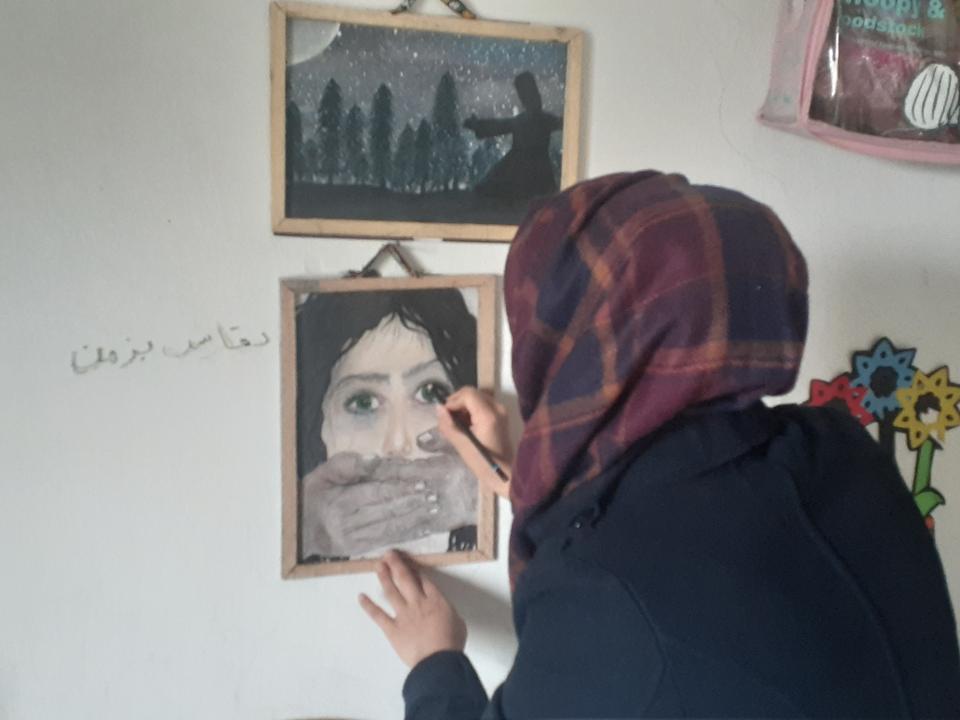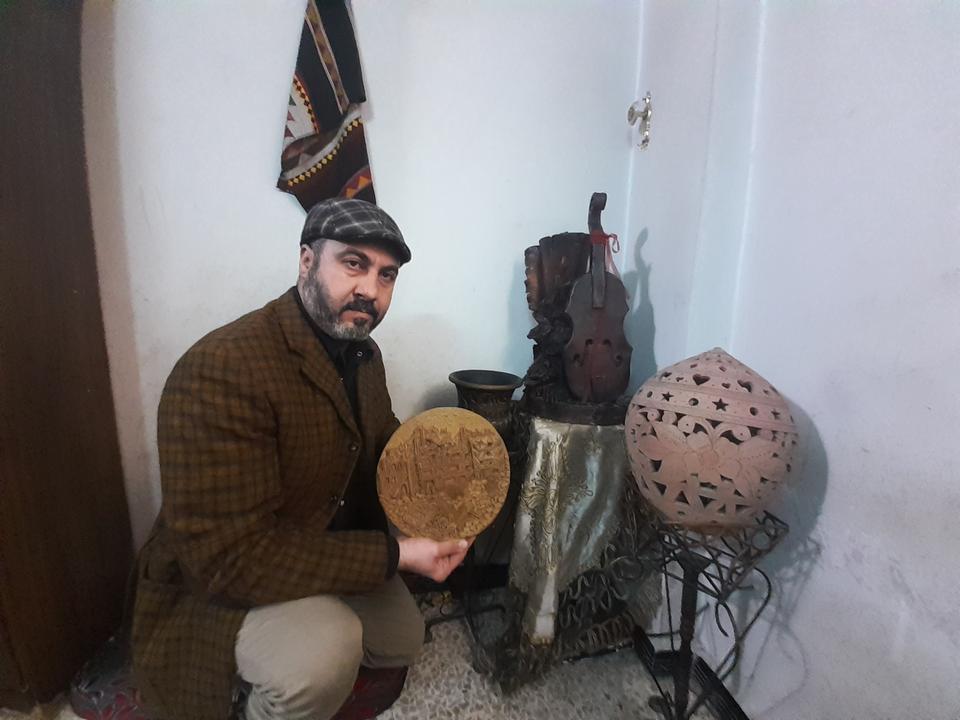
Mirna Barq, George Stifo and Bahnan Yamin:
'As Syrian Christians who grew up in Syria, we are concerned at the ongoing instability in the north. Situated between the Tigris and Euphrates rivers, this area is home to a rich diversity of Syrians: Kurds, Arabs, Assyrians, Muslims, Christians, Yazidis and others. It’s unconscionable that, after surviving genocidal rampages by ISIS, Christians and other civilians yet again are caught in the crosshairs.
But our Christian brothers and sisters in Syria face much worse, more long-term threats than this latest chaos. Targeted violence against Syrians of all faiths, including Christians, is a daily occurrence in the other two-thirds of the country controlled by a man whose unique sadistic tendencies have shocked the world: Syrian President Bashar al-Assad. A member of a minority community himself, Assad has used his status to garner sympathy and set himself up as the “protector of Christians.” We know better.
In September, the Syrian Network for Human Rights, relied upon for civilian death tolls by the UN since it stopped counting in 2014, released a report counting the number of Christian houses of worship targeted by all parties to the conflict — régime, opposition, ISIS, al-Qaeda and others. The results were damning: of the 124 churches targeted for shelling, bombing or military use since 2011, nearly two-thirds were at the hands of Assad’s forces, backed up by Russian air power and Iranian militias.
For Assad’s purposes, minority identity is a useful tool, until it’s not.
To wit, the ranks of peaceful protesters who took to the streets in 2011 demanding freedom, dignity and an end to corruption and injustice reflected the diversity of Syria. And all were equally targeted by the régime for demanding freedom — facing detention, torture, rape and death — including Christians.
Khalil Maatouk, a Christian human rights lawyer, represented many activists in Syrian courts. He was “disappeared” into a régime prison in October 2012. Saeed Malki, president of the Syriac Cultural Association, was taken into custody in 2013. Their statuses remain unknown. Bassam Ghaith, who led the Syrian Democratic People’s Party, was abducted in 2014 and months later the régime told his family he had died of cardiac arrest — the régime’s blanket explanation for those whose hearts stop under torture.
Christians likewise are among victims documented in the “Caesar” photos taken by a régime defector. His 55,000 images present bodies of protesters grotesquely mutilated and tortured almost beyond recognition, if not for the carefully cataloguing practices of Assad’s machinery of death that include identifying numbers for each victim. The photos are the strongest evidence of war crimes since the Nuremberg trials of the Nazis, according to the former U.S. Ambassador for War Crimes Stephen Rapp. Christians are among those whose eyes were gouged out, bodies electrocuted, stomachs starved and throats slit. Assad’s leash of “protection” runs as long as his desire for control, and no further.
It hasn’t always been this way for Christians in Syria. Few remember that a Protestant Christian Fares al-Khouri was democratically elected as prime minister of Syria in 1954. Since the rise of the Assad family to power in the 1970 coup d’état, however, Christian freedoms have declined. Even after the so-called reforms of 2012, Christians have still been barred from becoming president since the elder Assad took power. Free exercise of religion is restricted under Assad’s rule: church leaders are controlled and congregations infiltrated with spies to prevent dissent. Resistance to intimidation leads to arrests and execution, even nearby in Lebanon. Syriac Orthodox Archbishop Yohanna Ibrahim and Greek Orthodox Archbishop Boulos Yazigi, both of Aleppo, were abducted in 2013 only days after Bishop Ibrahim, a previous Assad supporter, criticized the régime’s brutality against Syrian citizens. The two remain missing. It’s no wonder that, as shepherds of their flocks, clergy are under extreme pressure to repeat régime talking points, even in the face of egregious human rights abuses like chemical attacks.
Further, Assad has purposely created escalating extremist dangers to Syria’s Christians in the cynical expectation they would have nowhere else to turn than his government for safe harbor. When the United States invaded Iraq in 2003, Assad’s strategy was simple: send violent extremists across the border to kill U.S. troops as a punishment and warning for toppling a fellow dictator. Immediately following the peaceful protests in March 2011, he employed the same strategy to dilute and poison legitimate, moderate voices for freedom and democracy. According to a former member of Syria’s Military Intelligence Directorate, “The régime did not just open the door to the prisons and let these extremists out, it facilitated them in their work, in their creation of armed brigades. The régime wanted to tell the world it was fighting al-Qaeda, but the revolution was peaceful in the beginning so it had to build an armed Islamic revolt. It was a specific, deliberate plan and it was easy to carry out.” Before he defected from the régime, Affaq Ahmad, the right hand of the head of the notorious Syrian Air Force Intelligence, testified that the régime found the al-Qaeda and ISIS-linked groups who made their way into Syria “very useful.” How? By allowing jidahist groups to kill minorities, the régime could “use that to convince these minorities to rally around the régime.”
The ploy’s results are plain: beheadings, enslavement, rape and genocide of Christians and Yazidis by ISIS, and destruction of churches, torture and death by Assad.
Further, Assad has purposely created escalating extremist dangers to Syria’s Christians in the cynical expectation they would have nowhere else to turn than his government for safe harbor. When the United States invaded Iraq in 2003, Assad’s strategy was simple: send violent extremists across the border to kill U.S. troops as a punishment and warning for toppling a fellow dictator. Immediately following the peaceful protests in March 2011, he employed the same strategy to dilute and poison legitimate, moderate voices for freedom and democracy. According to a former member of Syria’s Military Intelligence Directorate, “The régime did not just open the door to the prisons and let these extremists out, it facilitated them in their work, in their creation of armed brigades. The régime wanted to tell the world it was fighting al-Qaeda, but the revolution was peaceful in the beginning so it had to build an armed Islamic revolt. It was a specific, deliberate plan and it was easy to carry out.” Before he defected from the régime, Affaq Ahmad, the right hand of the head of the notorious Syrian Air Force Intelligence, testified that the régime found the al-Qaeda and ISIS-linked groups who made their way into Syria “very useful.” How? By allowing jidahist groups to kill minorities, the régime could “use that to convince these minorities to rally around the régime.”
The ploy’s results are plain: beheadings, enslavement, rape and genocide of Christians and Yazidis by ISIS, and destruction of churches, torture and death by Assad.
Backed up by Iranian-sponsored proxy militias and Russian warplanes and targeting assistance, Assad has waged a bloody campaign against all Syrian civilians, including Christians. Every day we pray with the psalmist: “Arise, O LORD; O God, lift up Your hand. Do not forget the afflicted” (Psalm 10:12). Our Christian faith demands we speak up for our Muslim, Alawite, Kurdish, Druze, Assyrian, Arab and Christian brothers and sisters throughout Syria, from the Tigris River to the Mediterranean Sea.
But it must be stated clearly: the United States is flailing in its approach toward Syria. It must take stock of its entire Syria policy, and fix it.
First, the United States must maintain a strong troop presence. A modest military force has essentially created a No Fly Zone in the northeast for years, and is the best bang for our buck in leverage for eventual peace negotiations. Foreign powers know the consequences of attacking U.S. troops and our partners nearby.
Second, the administration must restart $200 million in stabilization aid throughout the country to provide alternatives to both Assad and extremism. Christians and other ethnic and religious minorities throughout the country need assurances that they can live lives free from both hazards and from Iran, which is pursuing its well-trod policy of discrimination and demographic change in Syria as it has in Lebanon and historically Christian areas in Iraq. The State Department should realize the mandate for international religious freedom doesn’t stop at Iraq’s border — Syria must be a part of the picture.
Finally, stop the slow-motion civilian massacre in Idlib province, where men, women and children — including hundreds of Christians still holding on — are caught between extremists, Russian bombs, Assad’s troops and a closed Turkish border. While Turkey threatens to unleash the 3.5 million refugees it’s hosting into Europe, a similar number of internally displaced people are crammed into an area the size of Connecticut. It’s a humanitarian disaster already — we cannot let it become the worst catastrophe since the conflict began. President Trump must follow-up on his promise a year ago to stop the killing.
One sign of hope arrived in time for Christmas last year, as Congress and the President came together to sanction war criminals by passing the Caesar Syria Civilian Protection Act into law. We must build on this bipartisan momentum.
While division, war, oppression and hatred are Assad’s weapons of choice, Christ teaches unity, peace, freedom and love. Americans and officials in Washington must not ignore the torture of Christians in Assad’s prisons, the destruction of their churches by régime and Russian bombs, and the general horrors perpetrated on Syrians of all faiths.'
But it must be stated clearly: the United States is flailing in its approach toward Syria. It must take stock of its entire Syria policy, and fix it.
First, the United States must maintain a strong troop presence. A modest military force has essentially created a No Fly Zone in the northeast for years, and is the best bang for our buck in leverage for eventual peace negotiations. Foreign powers know the consequences of attacking U.S. troops and our partners nearby.
Second, the administration must restart $200 million in stabilization aid throughout the country to provide alternatives to both Assad and extremism. Christians and other ethnic and religious minorities throughout the country need assurances that they can live lives free from both hazards and from Iran, which is pursuing its well-trod policy of discrimination and demographic change in Syria as it has in Lebanon and historically Christian areas in Iraq. The State Department should realize the mandate for international religious freedom doesn’t stop at Iraq’s border — Syria must be a part of the picture.
Finally, stop the slow-motion civilian massacre in Idlib province, where men, women and children — including hundreds of Christians still holding on — are caught between extremists, Russian bombs, Assad’s troops and a closed Turkish border. While Turkey threatens to unleash the 3.5 million refugees it’s hosting into Europe, a similar number of internally displaced people are crammed into an area the size of Connecticut. It’s a humanitarian disaster already — we cannot let it become the worst catastrophe since the conflict began. President Trump must follow-up on his promise a year ago to stop the killing.
One sign of hope arrived in time for Christmas last year, as Congress and the President came together to sanction war criminals by passing the Caesar Syria Civilian Protection Act into law. We must build on this bipartisan momentum.
While division, war, oppression and hatred are Assad’s weapons of choice, Christ teaches unity, peace, freedom and love. Americans and officials in Washington must not ignore the torture of Christians in Assad’s prisons, the destruction of their churches by régime and Russian bombs, and the general horrors perpetrated on Syrians of all faiths.'



